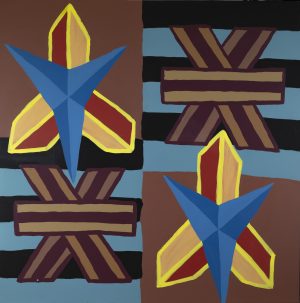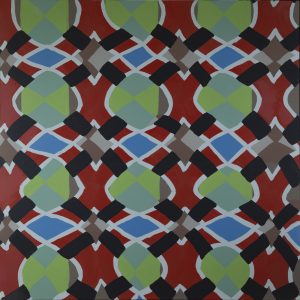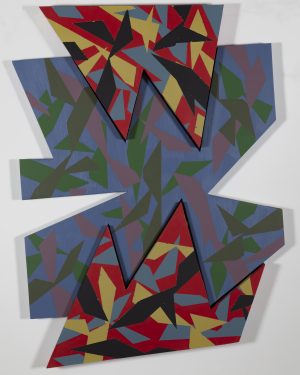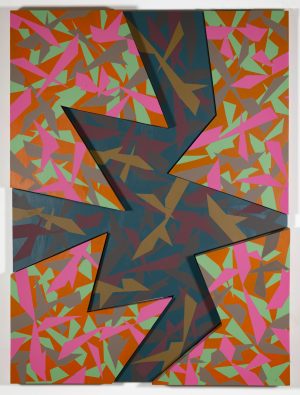
Gáspár SZŐKE
Dopo Roma I.
- Year(s)
- 2022
- Technique
- acrylic on plywood, fixed on pine slabs
- Size
- 125x125 cm
Artist's introduction
Gáspár Szőke, with his individual voice, is a representative of the new abstract generation of the 2010s. In his paintings of carpet-like patterns, he reinterpreted the 20th century tradition of geometric painting with the freedom of hip-hop. Born in Budapest, Szőke graduated from the Department of Painting of the Hungarian University of Fine Arts in 2009. By this time, the fundamentally geometric character of his painting had already become apparent, defined by the swirling forms of freehand shaping and the carpet-like proliferation of motifs. His painterly expression owed a great deal to the spontaneity of the hip-hop scene and graffiti, to an inward looseness far removed from the tradition of concretist art. In his paintings, Szőke, who was averse to analytical art programs, used figurative elements and axonometric cubes in addition to the swaying geometry. In the early 2010s, he was involved in several collective initiatives: with the Csakoda group he snuck some contemporary art into the isolated corners of rural Hungary, and as a member of the Szőke Clan he participated in "family" exhibition projects (with Péter Szőke and Miklós Gábor Szőke). His paintings have been dominated by brightly coloured, irregular patterns ever since: spatial cubes, rectangles, triangles, wavy bands, zigzag lightning bolts, camouflage leaves and twisting saw teeth. In addition to the planes of images, after 2017, spatial, three-dimensional details also appeared in his works, colliding the modernist aesthetics of the shaped canvas with the joyfully zigzagging lightning motifs of the new wave. The ever-changing art of Szőke incorporates new influences, from the socio-modernist influences of cloisonné to the paper cut-outs of the late Matisse, and – after a scholarship in Rome in 2021 – the patterns of classical Italian mosaic floors. As István Sinkó wrote about his approach: “Szőke's aim was to work with traditional image-construction and the use of colour. His works refer back to such experiments in the 1920s and 1950s, and forward to reinterpreting aspects of the contemporary scene." In addition to being an autonomous creative artist, Szőke is also interested in teaching and talent development, but he has also been present in the Hungarian hip-hop scene for a long time in various musical formations (Gazsi Rap Show, Lapos Föld (Flat Earth), Szőke Clan). He lives and works in Budapest. From time to time, he presents his new works in solo exhibitions in the capital. Gábor Rieder
More artworks in the artist's collection »













